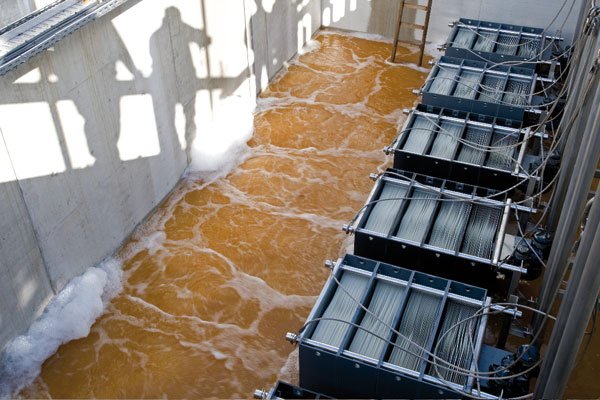
Leak Detection and Pipeline Asset Monitoring

Introduction
Leak detection and pipeline asset monitoring are crucial aspects of maintaining the integrity and efficiency of critical infrastructure. Pipelines play a vital role in various industries, including water supply, oil and gas, and wastewater management. Identifying leaks and monitoring the health of these assets is essential to prevent environmental disasters, conserve resources, and ensure the longevity of infrastructure. In recent years, advancements in technology have revolutionized this field, with innovative systems and products like Echologics offering more effective solutions for identifying and addressing issues. In this article, we will delve into the importance of leak detection and pipeline asset monitoring, discuss the latest systems and products, and explore the evolving landscape of this critical field.

- Environmental Protection:
One of the most significant reasons for the importance of leak detection is environmental preservation. Leaks, especially in the oil and gas industry, can have catastrophic consequences, leading to soil and water contamination, wildlife harm, and ecosystem damage. Efficient leak detection systems help mitigate these potential disasters.
- Resource Conservation:
Water is a finite resource, and any loss due to pipeline leaks is a waste of this valuable commodity. By detecting leaks promptly, water authorities can reduce losses and ensure the sustainable supply of clean water.
- Infrastructure Integrity:
Maintaining pipeline infrastructure is essential for the longevity and safety of any facility. Early detection of weak points, corrosion, or material fatigue can help in preventive maintenance, ensuring a longer asset lifespan and reducing repair costs.
Economic Implications
Leakages result in substantial financial losses. The cost of product loss, cleanup, and damage to infrastructure can be enormous. Timely detection and repair of leaks can save millions of dollars.
- Regulatory Compliance:
Many industries are subject to strict environmental regulations. Leak detection and pipeline asset monitoring are essential for compliance, and failure to do so can result in fines, legal actions, and damage to a company’s reputation.
- Operational Efficiency:
Leak detection systems enhance operational efficiency by reducing downtime and increasing productivity. They enable companies to address issues proactively, preventing costly disruptions.
Traditional Leak Detection Methods
Historically, several methods have been used for leak detection:
Visual Inspections
Visual inspections involve routine checks of the pipeline for visible signs of damage or leaks, such as corrosion or discolored vegetation. While simple and low-cost, they may not detect small leaks or those buried underground.
Pressure Monitoring
Pressure monitoring systems measure pressure fluctuations in the pipeline, which can indicate a leak. However, this method can yield false positives and is less effective for detecting slow leaks.
Acoustic Sensors
Acoustic sensors pick up sound waves generated by leaks. Although they are reliable, their accuracy depends on factors like pipe material and soil composition.
New Systems and Products
In recent years, technological advancements have transformed the landscape of leak detection and pipeline asset monitoring. These innovations are characterized by their precision, cost-efficiency, and ability to address the limitations of traditional methods. Some notable emerging technologies include:
- Echologics
Echologics is an example of a cutting-edge technology company at the forefront of the leak detection and pipeline asset monitoring field. They offer a unique and innovative system called “EchoShore-DX.” This product utilizes non-invasive acoustic technology to detect leaks in pressurized water pipelines. Here’s an overview of EchoShore-DX system and other recent advancements:
Acoustic Leak Detection: The EchoShore-DX system uses advanced acoustic sensors to listen for leaks in water distribution pipelines. It detects leaks accurately and quickly, allowing for prompt remediation.
Continuous Monitoring: This system provides continuous monitoring, making it an excellent choice for pipeline asset management. It can identify both small and large leaks, helping operators address issues before they become critical.
Data Analysis: The collected data is processed and analyzed using advanced algorithms to distinguish between actual leaks and ambient noise. This ensures high accuracy and minimizes false alarms.
Cost-Effective: EchoShore-DX is cost-effective as it doesn’t require excavation or interruption of service for installation, making it a practical choice for utilities.
- Fiber Optic Sensing:
Fiber optic sensing technology is gaining popularity for pipeline asset monitoring. It involves embedding optical fibers in the pipeline to monitor changes in temperature, strain, or acoustic vibrations. This real-time data can help identify leaks, stress points, and external threats.
- In-Pipe Inspection Robots:
Robotics are being employed for in-pipe inspection. Pipe inspection robots, sometimes referred to as sewer crawlers or pipe inspection robots, are devices that can traverse through pipes and other tight areas, such ducts and tunnels, to perform visual condition evaluations. These robots can navigate through pipes that contain some silt and debris because they have wheels or tracks attached. These kinds of inspections are frequently required to find issues like leaks, cracks, and obstructions that could harm the system or interfere with the fluid’s passage.
- Satellite Imaging and Remote Sensing:
Remote sensing technologies, including satellite imaging and drones, are used to monitor vast pipeline networks. They can detect changes in the landscape that might indicate pipeline stress or leaks. Satellite leak detection services use synthetic aperture radar (SAR) on the L-band of the electromagnetic spectrum. Many of the limitations that constrain traditional methods are overcome with satellite leak detection.
- Data Analytics and AI:
Advanced data analytics and AI are employed to process the vast amounts of data collected from sensors. Machine learning algorithms can predict pipeline failures and identify maintenance needs.
Conclusion
Leak detection and pipeline asset monitoring are integral to safeguarding the environment, conserving resources, ensuring infrastructure integrity, complying with regulations, and enhancing operational efficiency. Traditional methods have their limitations but With the rapid advancement of technology, innovative solutions like Echologics, fiber optic sensing, in-pipe inspection robots, remote sensing, and AI-based data analytics are transforming the industry, making it easier than ever to identify and address pipeline issues promptly. As the demand for more reliable and efficient solutions continues to grow, the future of leak detection and pipeline asset monitoring holds promise for a safer and more sustainable world.

